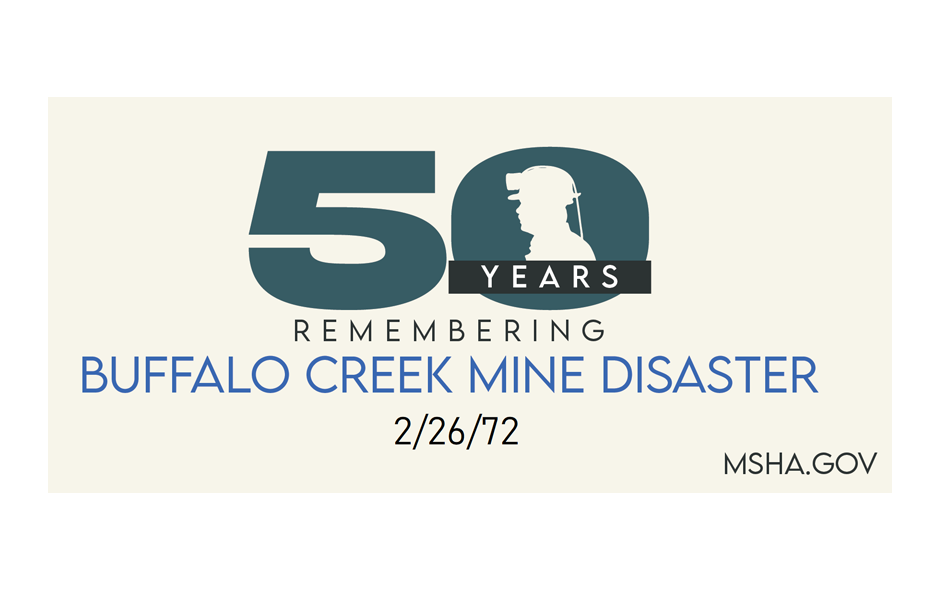
Buffalo Creek Mine Disaster: Feb. 26, 1972
February 26, 2022, marks the 50th anniversary of one of the most devastating mine disasters in U.S. history. Three coal waste dams in West Virginia failed, killing 125 people and injuring 1,100 more in communities downstream of the dams.
Approximately 550 homes were destroyed, and another 900-plus were damaged. Total property damage was estimated at $50 million (about $340 million in 2022 dollars).
What happened?
From 1962 to 1972, three dams were built in on the middle fork of Buffalo Creek in Logan County. Each upstream dam was built several hundred yards upstream of the previous dam. The pool behind Dam No. 1 filled up with fine waste, then Dam No. 2 was built on top of that waste. This process was repeated when the third dam (Dam No. 3) was built over Dam No. 2’s slurry pool.
The dams were intended to leak and serve as filters. Black water was pumped into pools behind the dams and dams filtered the deposits so that relatively clear water could run out their downstream face. The dams were not designed or constructed in accordance with then-current engineering standards. Instead, the builders “end-dumped” and shoved loosely compacted layers of coarse refuse across the valley. It was a recipe for disaster as the trio of dams was inadequate to handle runoff from large rainstorms, like the one that dumped several inches of rain on Logan County by early Saturday morning, Feb. 26.
Because of the downpour, nearly 50 acre-feet of fresh water filled the pool of Dam No. 3 above its impounded sediment. The pool was within three feet of the crest of the dam, and ominous cracks appeared. These cracks were a clear indication of the saturation and subsequent destabilization of the structure, but no evacuation order was issued. Dam No. 3 failed at 8 a.m., releasing millions of gallons of water into Dam No. 2. Read More»
McCraren Compliance offers many opportunities in safety training to help circumvent accidents. Please take a moment to visit our calendar of classes to see what we can do to help your safety measures from training to consulting.


